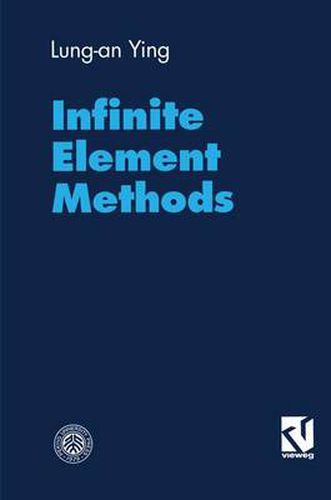Readings Newsletter
Become a Readings Member to make your shopping experience even easier.
Sign in or sign up for free!
You’re not far away from qualifying for FREE standard shipping within Australia
You’ve qualified for FREE standard shipping within Australia
The cart is loading…






This title is printed to order. This book may have been self-published. If so, we cannot guarantee the quality of the content. In the main most books will have gone through the editing process however some may not. We therefore suggest that you be aware of this before ordering this book. If in doubt check either the author or publisher’s details as we are unable to accept any returns unless they are faulty. Please contact us if you have any questions.
As its name indicates, in the infinite element method the underlying domain is divided into infinitely many pieces. This leads to a system of infinitely many equations for infinitely many unknowns; but these can be reduced by analytical techniques to a finite system when some sort of scaling is present in the original problem. The simplest illustrative example, described carefully at the beginning of the first chapter of the book, is the solution of the Dirichlet problem in the exterior of some polygon. The exterior is subdivided into annular regions by a sequence of geometrically expanding images of the given polygon; these annuli are then further subdivided. The resulting variational equations take the form of a block tridiagonal Toeplitz matrix, with an inhomogeneous term in the zero component. Various efficient methods are described for solving such systems of equations.
… The infinfte element method is, whereever applicable, an elegant and efficient approach to solving problems in physics and engineering. Professor Yings welcome book makes it available to the community of numerical analysts and computational scientists.
(From the Preface by Peter D. Lax)Die Infinite Elemente Methode wird hauptsachlich bei der Berechnung singularer Loesungen partieller Differentialgleichungen und bei deren Loesung von Gleichungen auf unbeschrankten Gebieten angewandt. In dem Buch wird ein spezielles numerisches Verfahren vorgestellt, das bisher noch relativ unbekannt geblieben ist.
$9.00 standard shipping within Australia
FREE standard shipping within Australia for orders over $100.00
Express & International shipping calculated at checkout
This title is printed to order. This book may have been self-published. If so, we cannot guarantee the quality of the content. In the main most books will have gone through the editing process however some may not. We therefore suggest that you be aware of this before ordering this book. If in doubt check either the author or publisher’s details as we are unable to accept any returns unless they are faulty. Please contact us if you have any questions.
As its name indicates, in the infinite element method the underlying domain is divided into infinitely many pieces. This leads to a system of infinitely many equations for infinitely many unknowns; but these can be reduced by analytical techniques to a finite system when some sort of scaling is present in the original problem. The simplest illustrative example, described carefully at the beginning of the first chapter of the book, is the solution of the Dirichlet problem in the exterior of some polygon. The exterior is subdivided into annular regions by a sequence of geometrically expanding images of the given polygon; these annuli are then further subdivided. The resulting variational equations take the form of a block tridiagonal Toeplitz matrix, with an inhomogeneous term in the zero component. Various efficient methods are described for solving such systems of equations.
… The infinfte element method is, whereever applicable, an elegant and efficient approach to solving problems in physics and engineering. Professor Yings welcome book makes it available to the community of numerical analysts and computational scientists.
(From the Preface by Peter D. Lax)Die Infinite Elemente Methode wird hauptsachlich bei der Berechnung singularer Loesungen partieller Differentialgleichungen und bei deren Loesung von Gleichungen auf unbeschrankten Gebieten angewandt. In dem Buch wird ein spezielles numerisches Verfahren vorgestellt, das bisher noch relativ unbekannt geblieben ist.